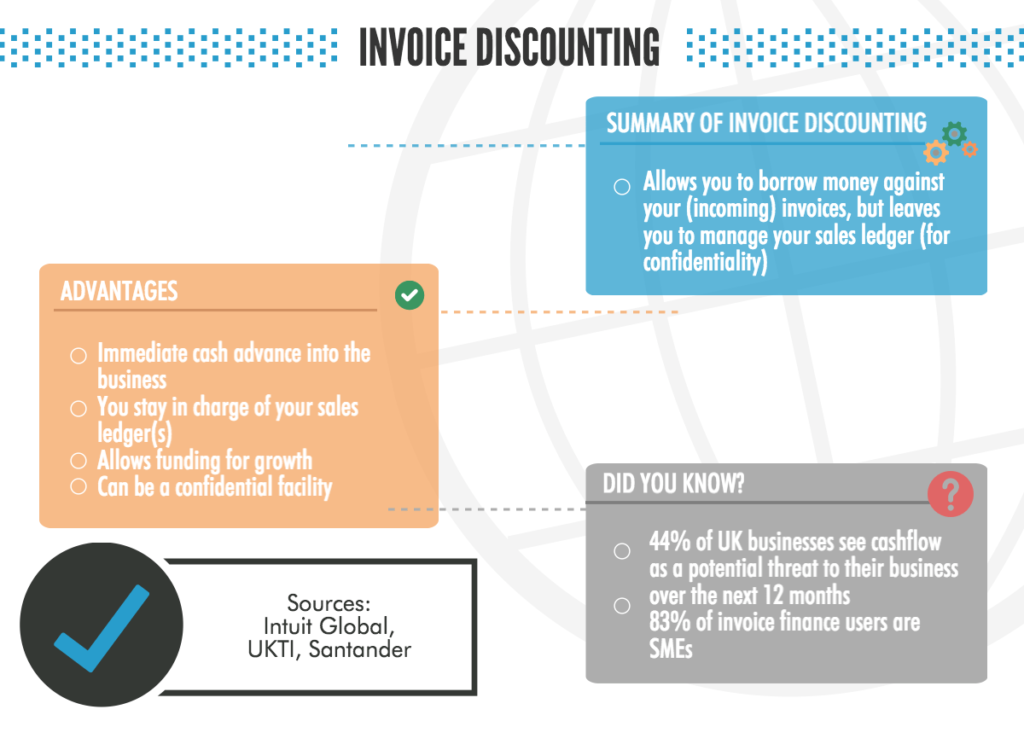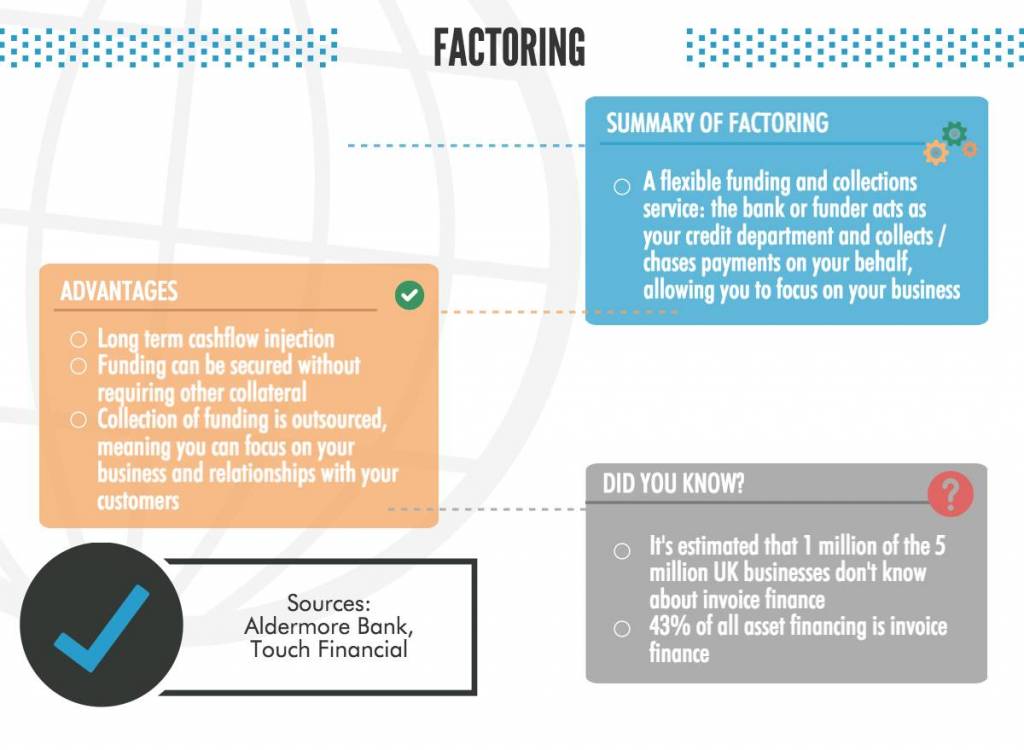Many businesses might consider the idea of invoice finance facilities to help them free up working capital, but are unsure about rates and costed. If you’re one of these business owners, here’s a brief summary of how costs are broken down when it comes to getting a discounting or factoring quote. It’s always a good idea to speak to a funding expert who can not only speak to many lenders on your behalf to get the most cost effective solution for your business, but also find the most appropriate financing solution when taking into account your business needs.
Terminology varies between funders, and can often get complicated. We’ve put together a quick guide on the key considerations when looking at factoring or discounting quotations.
What influences factoring rates?
The main driver of rates for invoice factoring and discounting is the lender’s exposure to risk. Invoice finance is generally considered as low risk as the project has been complicated or goods produced, so the interest rates charged will almost certainly be lower than unsecured loans.
How do funders assess risk?
Risk of lending to your business could be assessed in many ways, here are the key indicators that might affect the cost of the invoice finance product:
- Industry or sector your company is in – many industries which are volatile or seasonal, or perhaps those where the customers are known to pay late (e.g. FMCG)
- Credit worthiness of your end customers, and also your own business. If your end customers are reputable buyers (e.g., well known supermarket chains or retailers), or your business is creditworthy (no bad debt, makes payments on time, has considerable security and good cash flow), the risk of lending is lowered
- Previous history of cash flow handling in your business – if you can demonstrate good practise of collecting debt from customers, and controlling credit in your organisation, this is likely to work in your favour
- Administration required – if the invoice finance facility is more complex (multiple invoices, multiple countries, different currencies), it could increase the administrative cost associated
Cost of factoring versus discounting:
Once you’ve received a quote from your lenders, there are several fees associated that you might be quoted. Here are the main ones and what they actually mean:
Service charge
This is a fixed fee charged in an annual or monthly basis, normally a percentage of annual turnover
Discount charge
This is the interest charge on the invoice finance facility; it might be built in to the service charge, but typically the main bulk of the fees
Additional charges
Other charges associated with invoice finance could include administration, due diligence and compliance fees. This varies depending on the lender
As with any finance facility, be that personal or commercial, it’s always advisable to look at the total cost of a facility over a period of time, rather than just the interest rate (discount charge), as the service fees might add up so that the overall cost is much more.
Invoice finance types: other factors which affect the cost
There are many other factors which could affect the quote you’re given, and it’s worth considering:
Security
Sometimes the funder might ask for additional security to go ahead with an invoice finance facility. This includes an all assets debenture over the business or commercial property, or a personal / director guarantee.
 Australia
Australia Hong Kong
Hong Kong Japan
Japan Singapore
Singapore United Arab Emirates
United Arab Emirates United States
United States France
France Germany
Germany Ireland
Ireland Netherlands
Netherlands United Kingdom
United Kingdom








Comments are closed.